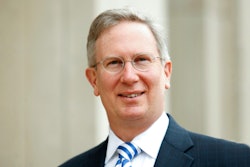BOSTON
In what Berklee College of Music
President Roger Brown calls a “psychological victory for the institution,” the
board of trustees recently adopted an amended mission statement for the college
that acknowledges the historical contributions that African descendants have
made to the development of the contemporary American musical genres on which
Berklee’s curriculum and training are based.
“Founded on jazz and popular music rooted in the
African cultural diaspora, our comprehensive curriculum is distinctly
contemporary in its content and approach, and embraces the principal musical
movements of our time,” is how the second paragraph of the revised mission
statement now reads.
And apparently,
the change comes none too soon.
“People have been talking about this for a long
time,” says Myra Hindus, the college’s vice president of cultural diversity.
According to
Brown, the Association of Faculty of African Descent has “long felt like the
college needs to recognize its roots and change its behavior to accompany that
recognition. AFAD came up with the notion of amending the mission statement.”
AFAD, headed by
Diane Richardson, an associate professor of voice, is part of a 23-member
steering committee doing a comprehensive review of the curriculum to better
reflect the college’s mission.
“Our focus in
that regard is to work towards making sure that we have a core course here at
Berklee that teaches where the music came from,” Richardson
says, adding that faculty are looking within their own departments and doing
their own surveys to determine which areas can be improved.
Dr. William C.
Banfield, a professor in the liberal arts department, says the curriculum
initiative hopes to “bring together faculty across many disciplines, all
connected to courses that focus on [the] history and … culture [behind] Black music
… in the diaspora.”
Berklee’s
approach that contemporary music can serve as a basis for education and
training is unique among the nation’s colleges of music.
“Its ‘product,’
if you will, is quite different from most of the other conservatories,” says
Michael Manderen, director of admissions at the Oberlin Conservatory of Music
and a lecturer in guitar and lute.
Says Tom Riley, vice president for external affairs
at Berklee, “No other [musical] colleges can say that they were built on the
[music of] the African” diaspora.
And while the
mission is changing, other things are changing, too, Hindus says, referencing
the “complete parallel strategy,” that the college is implementing that
“integrates diversity into every element of the school,” including enrollment,
faculty recruitment, curriculum, facilities, community and resources.
With a student
population of 3,800, Berklee has the highest percentage of international
undergraduate students, at 26 percent, of any college or university in the United
States, according to the college’s Web site.
In addition, between 1999 and 2006, the college almost tripled its percentage
of students of African descent, according to Brown. And over the past eight
years, the domestic Hispanic student enrollment has grown from 2 percent to 14
percent.
The feeling
among the Berklee community is that music and diversity are essentially
inseparable.
“Music is so
intricately linked to culture that if you don’t teach the cultural context of
the music there’s something missing,” Brown says.
Carl Beatty, the
college’s chief of staff, says it’s encouraging to work at an institution
that’s trying to do the right thing.
“Every Black
jazz musician I’ve run into has felt that this college has made its fortune on
the backs of Black people, and to have the mission acknowledge that debt is
going to be very significant.”
Established in
1945, Berklee boasts such alums as producer/composer Quincy Jones (’51),
“Tonight Show” guitarist Kevin Eubanks (’79), jazz musician Branford Marsalis
(’80), singer Melissa Etheridge (’80) and guitarist/singer/songwriter John
Mayer (’98).
— Diverse Staff
There are currently 0 comments on this story.
Click here to post a comment.
© Copyright 2005 by DiverseEducation.com


















